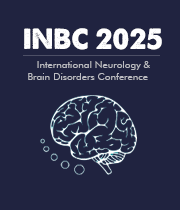Title : Comparative lipidomic profiling reveals shared and distinct metabolic alterations in neuronal ceroid lipofuscinoses
Abstract:
Neuronal ceroid lipofuscinoses (NCLs) are a group of autosomal recessive lysosomal storage disorders characterized by the intracellular accumulation of an auto fluorescent pigment called lipofuscin. Thirteen subtypes of NCL have been identified so far, and the genes responsible are collectively referred to as ceroid lipofuscinosis neuronal. NCLs are the most prevalent form of childhood neurodegenerative disorder, with a prevalence of 1.3 to 7 in 100,000 live births worldwide, and certain subtypes are more common in specific geographical regions. Clinically, they are categorized into four subtypes: infantile, late-infantile, juvenile, and adult-onset. Life expectancy varies among the variants; the average life expectancy for NCL1, NCL2, and NCL3 is particularly low, with most affected children dying prematurely in early childhood. Despite being clinically relevant, research on biomarker discovery for early diagnosis and therapeutic monitoring remains limited.
As lipids are major players in neurodegenerative disorders, we employed a liquid chromatography–tandem mass spectrometry (LC-MS/MS)-based global lipidomic approach, using the AcquireX deep scan workflow, to characterize lipid alterations in patient-derived lymphoblastoid cell lines from individuals with NCL1, NCL2, and NCL3. A total of 580 lipids were identified across 20 distinct lipid classes, of which 103 showed statistically significant differences (p < 0.05) relative to controls.
A cross-subtype comparison revealed that ceramides, cholesteryl esters, diacylglycerols, and polyunsaturated fatty acids were consistently upregulated across all three NCL subtypes. Other lipid classes—such as hexosylceramides, lysophosphatidylglycerol, phosphatidic acid, phosphatidylinositol, and cardiolipins—showed subtype-specific dysregulation, suggesting a convergent pathogenic mechanism. Our results provide valuable insight into lipid alterations and contribute to the mechanistic understanding of NCL. Further correlation with genetically confirmed NCL patient samples will help refine these metabolites into clinically useful biomarkers for early detection, prognosis, and therapeutic monitoring in pediatric neurodegenerative disorders.



